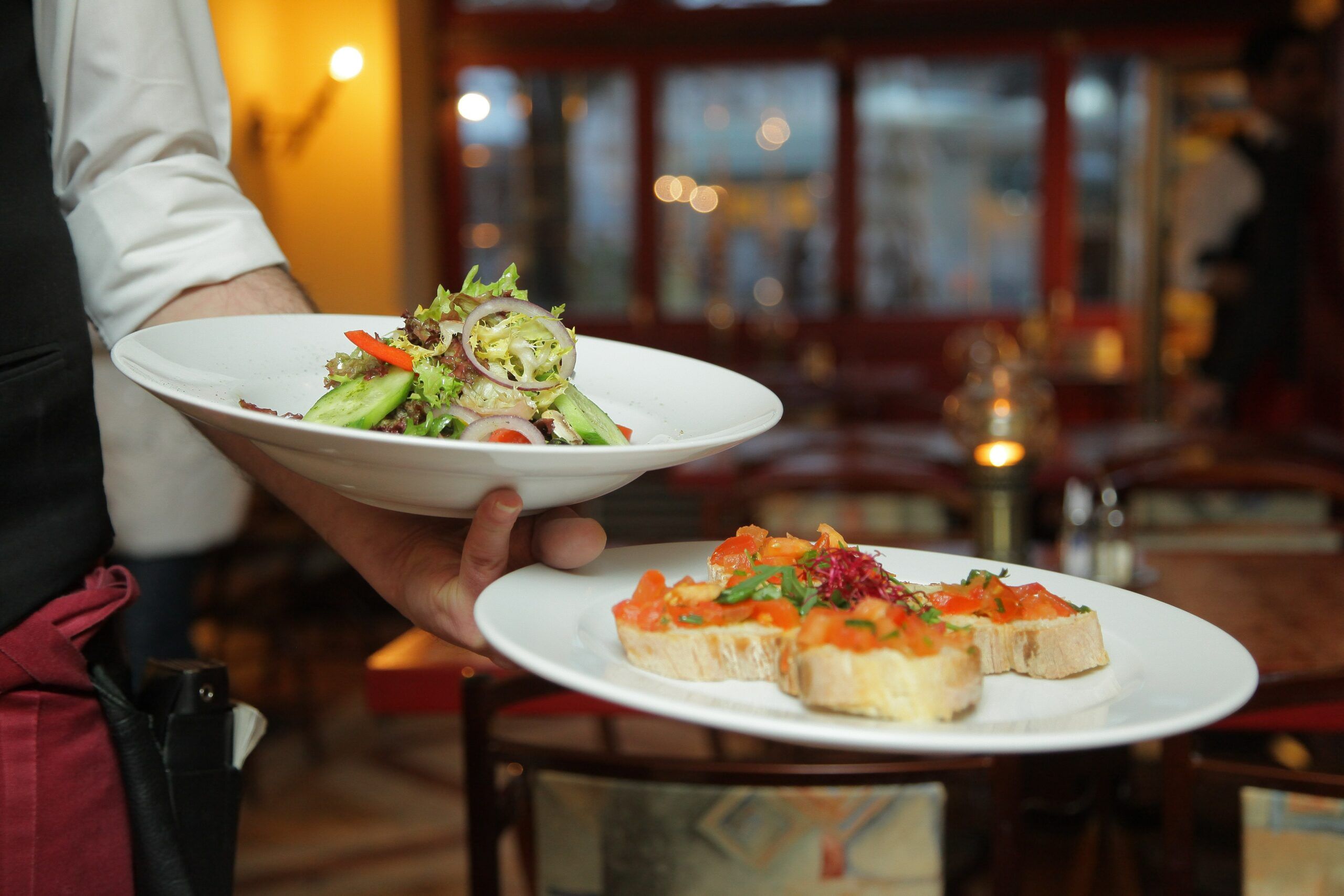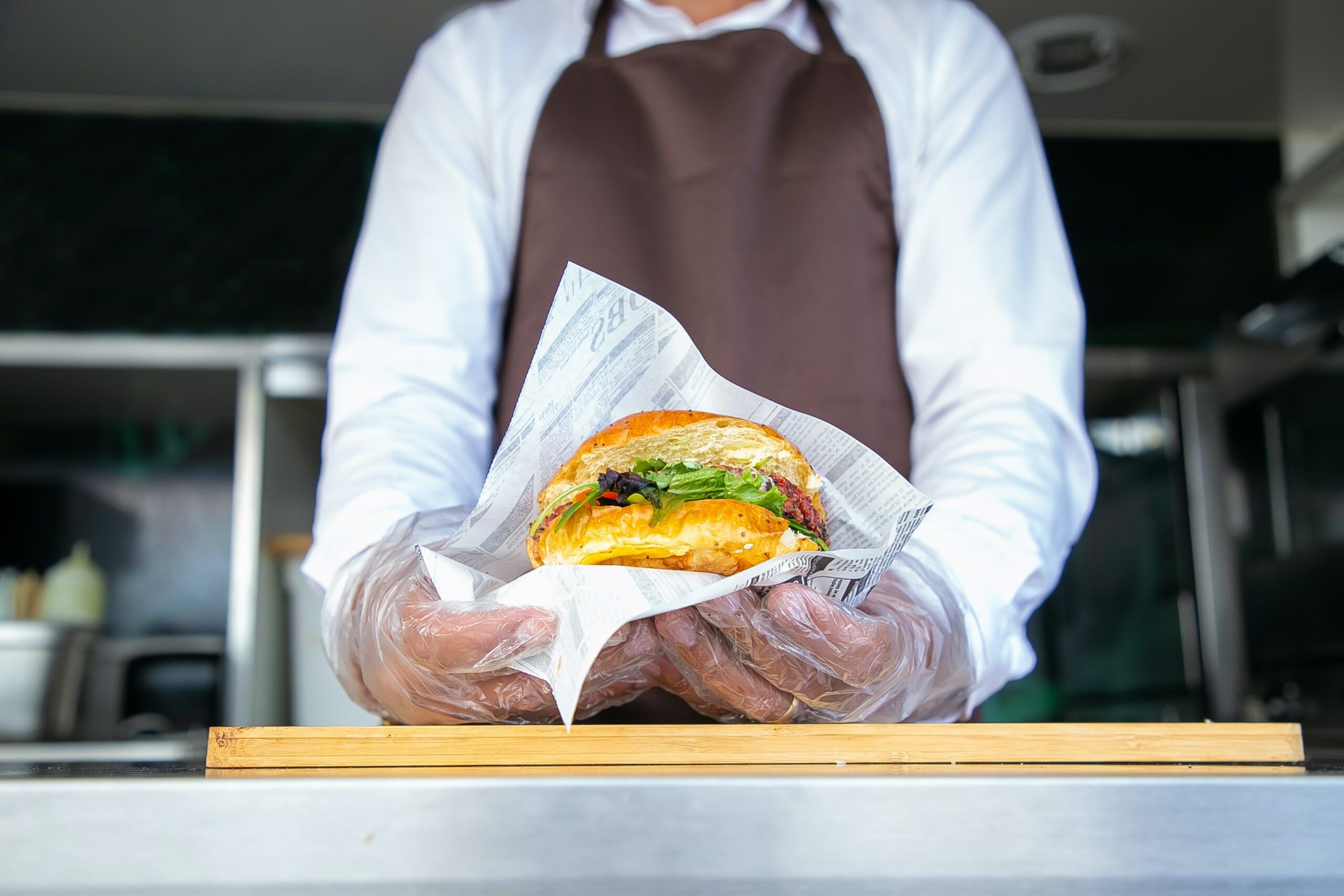- What is Restaurant Ordering Software, and What are its Main Features?
- 7 Reasons Why I Should Have Online Software as a Restaurant Owner
- How to Choose the Right Ordering Software
- A Guide to Choosing the Right Restaurant Ordering Software
In an era where technology defines success, this software is a convenience and a strategic asset for your establishment.
As restaurant owners, adopting this software isn’t merely about accommodating online orders; it’s a deliberate move to enhance operational efficiency and elevate the dining experience.
This is a journey into heightened digital experiences, positioning your restaurant at the forefront of innovation.
It’s a practical step that empowers your business, streamlines operations and embraces the evolving landscape of dining preferences.
From optimizing order processing to providing a seamless customer interface, restaurant online ordering software isn’t just a feature.
It’s a strategic investment in your marketing solutions that can redefine how your restaurant thrives in the digital age.
What is Restaurant Ordering Software, and What are its Main Features?
Restaurant Ordering Software is a specialized solution designed to streamline and enhance the process of managing orders in a restaurant, whether for dine-in, takeout, or delivery.
It leverages technology to provide a seamless experience for both customers and restaurant staff, optimizing order processing, reducing errors, and improving overall efficiency.
Here are its main features:
Online Ordering System:
Enables customers to place orders conveniently through a user-friendly online platform, often accessible via a website or mobile app.
Menu Management:
Allows restaurants to easily update and manage their menus. Changes reflect in real-time on the online ordering platform.
Order Processing:
Facilitates swift and accurate order processing, notifying staff of new orders and updating inventory levels in real time.
Integration with POS Systems:
Seamless integration with Point of Sale (POS) systems to synchronize orders, payments, and inventory management.
Table Reservation System:
For dine-in establishments, it includes a reservation system that allows customers to book tables in advance.
Delivery Management:
Provides tools for managing delivery orders efficiently, including route optimization, order tracking, and delivery status updates.
Payment Processing:
Secure and integrated payment processing, supporting various payment methods, like credit/debit cards and online payment gateways.
Customer Management:
A centralized database for customer profiles, order history, and preferences, enabling more personalized service and targeted marketing.
Reporting and Analytics:
Generates detailed reports on sales, customer behavior, and other key metrics, aiding in strategic decision-making.
Promotions and Discounts:
Allows the implementation of promotional offers, discounts, and loyalty programs to attract and retain customers.
Multi-Location Support:
Scalability to accommodate multiple restaurant locations, streamlining operations for chains or franchises.
Customer Feedback and Reviews:
Incorporates features for customers to provide feedback, reviews, and ratings, fostering transparency and continuous improvement.
Inventory Management:
Monitors and manages inventory levels in real-time, helping to prevent stockouts and optimize ingredient usage.
Security and Compliance:
Adheres to security standards and compliance regulations, protecting customer data and payment information.
User-Friendly Interface:
Intuitive interfaces for both customers and restaurant staff making sure ease of use and minimal training requirements.
Your Inbox, Your Rules!
Tailor your newsletter with the topics you're most interested in.
7 Reasons Why I Should Have Online Software as a Restaurant Owner
As a restaurant owner, integrating restaurant ordering software into your operations offers a myriad of benefits that can significantly enhance your business.
Here are some seven compelling reasons why you should consider adopting this solution:
Expanded Reach and Accessibility:
- Why It Matters: Restaurant owners can reach a broader audience by providing customers with convenient online ordering systems accessible anytime, anywhere.
- How It Helps You: Capture new customers who prefer the ease of ordering online, whether for takeout, delivery, or table reservations.
Increased Operational Efficiency:
- Why It Matters: Streamline your restaurant’s operations, from order processing to inventory management, reducing manual errors and enhancing efficiency.
- How It Helps You: Spend less time on administrative tasks and focus more on delivering exceptional culinary experiences to your patrons.
Improved Customer Experience:
- Why It Matters: Enhance the overall dining experience by providing your customers with a user-friendly platform to browse menus, customize orders, and track deliveries.
- How It Helps You: Satisfied customers are more likely to become repeat customers, leading to increased loyalty and positive word-of-mouth.
Effective Marketing and Promotions:
- Why It Matters: Implement targeted promotions, discounts, and loyalty programs to attract and retain customers.
- How It Helps You: Boost sales by enticing customers with personalized offers and keeping them engaged with your restaurant.
Accurate Data and Analytics:
- Why It Matters: Gain valuable insights into customer behavior, popular menu items, and peak ordering times through robust reporting and analytics.
- How It Helps You: Make data-driven decisions to optimize your menu, pricing, and marketing strategies for maximum profitability.
Adaptability to Industry Trends:
- Why It Matters: Stay competitive by adapting to restaurant industry trends, such as the growing demand for an online ordering solution and delivery service.
- How It Helps You: Position your restaurant as modern and customer-focused, aligning with changing consumer preferences.
Cost-Effective and Scalable:
- Why It Matters: Enjoy a cost-effective solution that scales with your business, catering to the needs of single-location establishments or expanding restaurant chains.
- How It Helps You: Avoid hefty upfront costs and pay for the features you need, making it a flexible and scalable investment.
How to Choose the Right Ordering Software
Choosing the best online ordering system for you is pivotal for the success of your business.
Here’s a guide to help you navigate this decision-making process:
Define Your Needs:
Begin by identifying your specific requirements. Consider the volume of orders you generally handle, the type of cuisine you offer, and whether you focus on dine-in, takeout, or delivery services.
User-Friendly Interface:
Opt for software with a more intuitive and easy-to-use interface. This ensures that both your staff and customers can navigate the platform effortlessly.
Integration Capabilities:
Look for a system that integrates seamlessly with your existing Point of Sale (POS) system. This minimizes disruptions to your current operations and ensures a smooth transition.
Delivery Aggregation Feature:
You can consider Orders.co’s software, which uniquely aggregates delivery apps in one platform. This feature simplifies the ordering process for customers by providing a centralized hub for delivery orders, enhancing convenience and efficiency.
Customization Options:
If building a distinctive restaurant brand image is crucial for your restaurant, seek a platform that offers customization options. Orders.co, for instance, streamlines orders and helps build a custom restaurant website for efficient and direct online ordering tailored to your brand identity.
Reporting and Analytics:
Prioritize software that provides robust reporting and analytics tools. This empowers you with valuable insights into customer behavior, order trends, and your restaurant’s overall performance.
Scalability:
Pick a solution that scales with your restaurant business. Whether you’re a single-location restaurant or planning expansion, the software should accommodate your evolving needs.
Customer Support:
Assess the level of customer support provided by the software provider. Timely assistance can be crucial in resolving issues promptly and ensuring smooth operations.
Cost Considerations:
Evaluate the cost structure of the software, considering both upfront fees and ongoing subscription costs. Ensure that the pricing aligns with your budget and provides value for the features offered.
Security Measures:
Prioritize the security of customer data and payment information. Choose a platform that adheres to industry standards for data protection.
By considering these factors and the unique features offered by Orders.co, such as delivery app aggregation and custom website development, you can make an informed decision that aligns with your restaurant’s specific needs and goals.
A Guide to Choosing the Right Restaurant Ordering Software
Selecting the right Restaurant Ordering Software is a pivotal decision that can shape the efficiency and success of your restaurant.
Consider unique features like Orders.co’s app aggregation and custom website development to enhance the online ordering and dining experience for customers and staff.
Remember to prioritize integration capabilities, scalability, and robust reporting tools to ensure a seamless and future-proof solution.
As you embark on this technological journey, remember that the right software streamlines operations and becomes a strategic asset, propelling your restaurant toward sustained growth and customer satisfaction.
Cheers to a future of efficient and delightful dining experiences!



